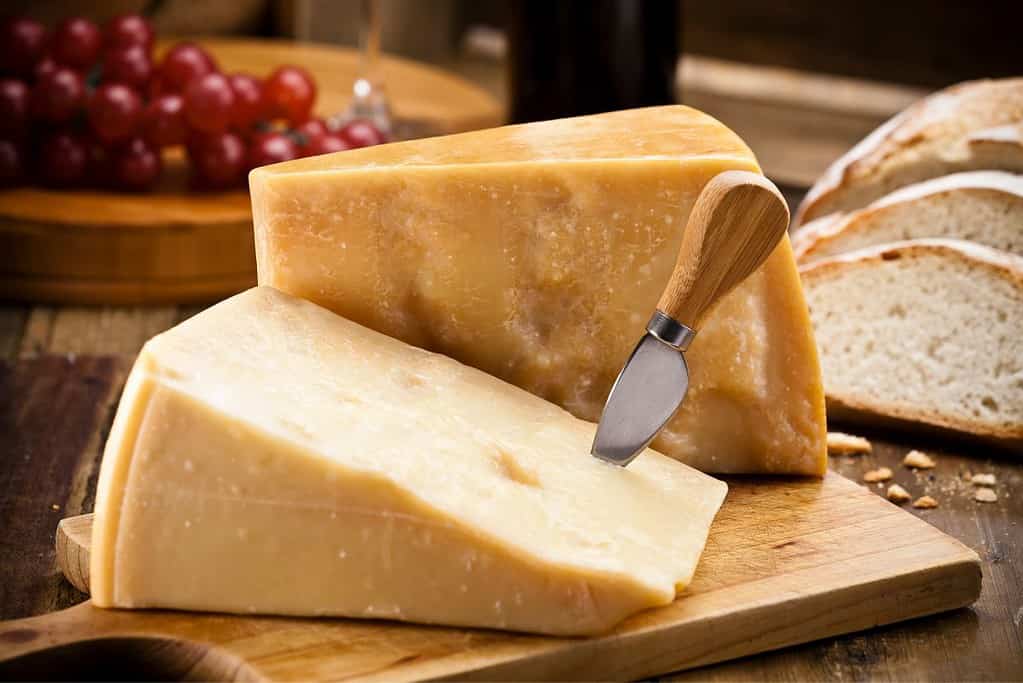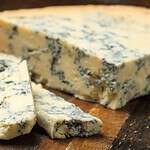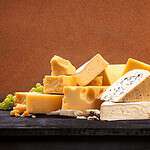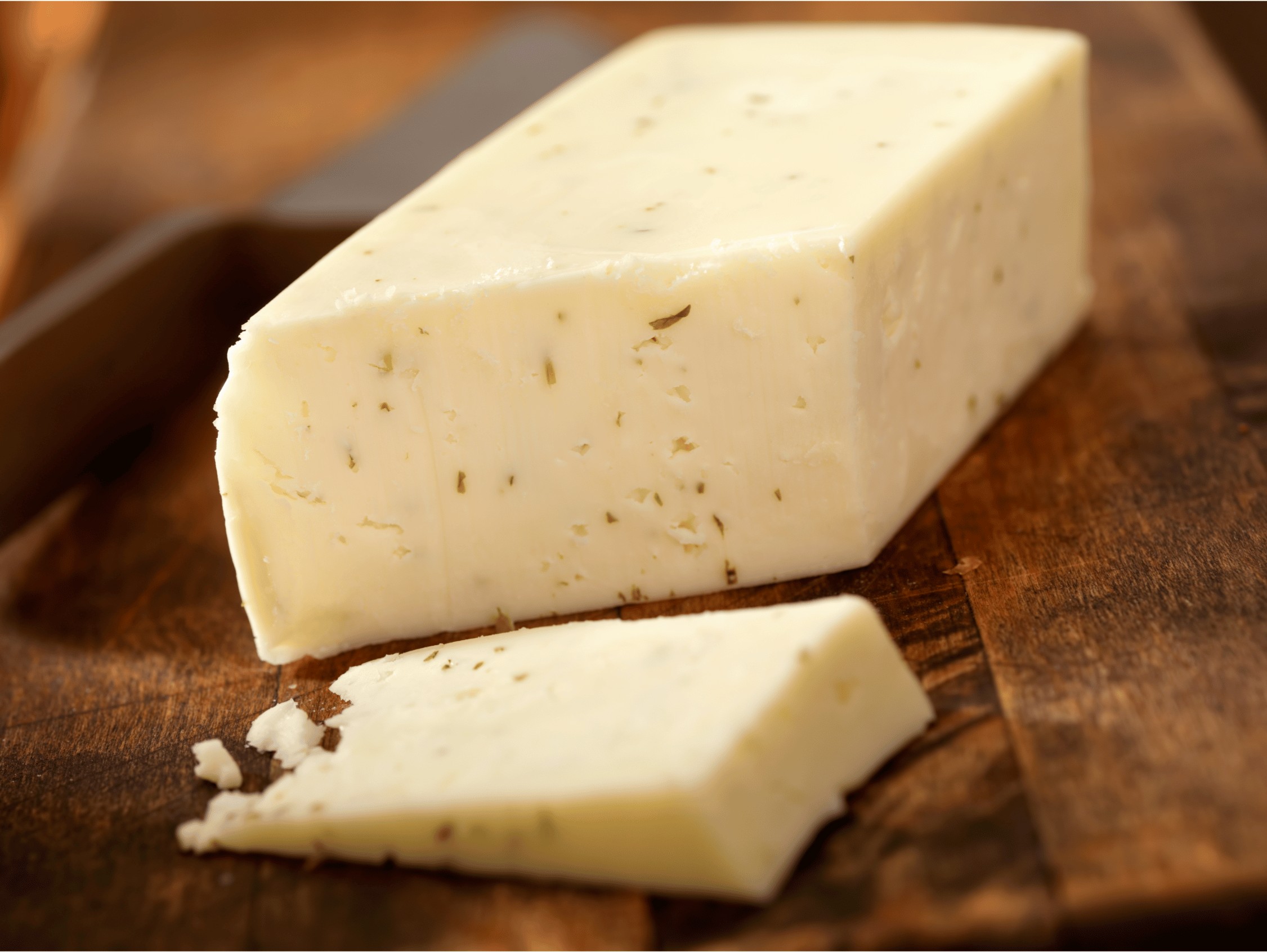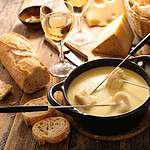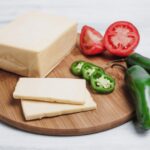Parmesan cheese, known for its hard texture and sharp, nutty flavor, is a staple in Italian cuisine and beyond. We can trace its origins back to the Middle Ages in the regions of Parma and Reggio Emilia, Italy, where it is still produced following traditional methods. Protected by Designation of Origin status, genuine Parmesan, or Parmigiano-Reggiano, remains tied closely to its geographical roots and centuries-old processes.

The production process begins with high-quality cow’s milk, which is partially skimmed and heated before being mixed with natural whey starter and rennet. This mixture is then left to coagulate, leading to the formation of curds. The curds are broken down into granules, cooked, and placed into molds to form the wheels of cheese. These wheels are subsequently salted in brine and aged for a minimum of 12 months, with some cheeses maturing for over 36 months to develop their distinctive flavor and granular texture. Quality control is rigorous throughout manufacturing, ensuring that each wheel of Parmesan cheese meets the high standards set by regulatory bodies.
Parmesan cheese is a versatile ingredient, enhancing dishes with its rich flavor whether it’s grated over pasta, incorporated into sauces, or used as a garnish for salads. We understand the importance of proper storage and preservation to maintain its quality, including keeping it in a cool, dry place and wrapping it in a breathable material. Also, Parmesan packs a nutritional punch, offering a source of protein, vitamins, and minerals.
Key Takeaways
- Parmesan cheese has a rich history and is protected by strict geographical and production standards.
- The cheese’s quality is ensured through a meticulous production and aging process.
- Parmesan is versatile in cooking and offers significant nutritional benefits.
History and Origin
We find the beginnings of Parmesan cheese, or Parmigiano-Reggiano, deeply rooted in the traditions and practices of Northern Italy, specifically within the regions of Emilia-Romagna and Lombardy. With a meticulous process refined over centuries, this cheese has become synonymous with Italian culinary expertise.
Geographical Significance
Our exploration takes us to the provinces of Parma, Modena, and Reggio Emilia in Emilia-Romagna, as well as parts of the provinces of Bologna to the east of the Reno River, and Mantua in Lombardy to the south of the Po River. These areas are markedly influential in the history of Parmesan cheese. It is here that the geographical factors such as climate and terroir contribute immensely to the distinct taste and texture of Italian Parmesan.
The region’s rich grassland provides the ideal conditions for cattle grazing, which in turn influences the quality of the milk used for Parmesan production. We acknowledge Italy’s commitment to preserving the integrity and authenticity of Parmigiano-Reggiano, with strict production standards governed by The Consorzio del Formaggio Parmigiano-Reggiano established in 1934. The consortium ensures that only cheese produced in these specific regions can be branded as Parmigiano-Reggiano.
To maintain this heritage, we recognize the PDO (Protected Designation of Origin) status, which Italian Parmesan has held since 1996, safeguarding its production only to these designated areas of Northern Italy. This ensures the continuation of traditional methods and the survival of a unique gastronomic icon that is cherished worldwide.
Production Process
In the creation of Parmesan cheese, we adhere to a time-honored process that begins with high-quality milk and ends with a finely aged cheese noted for its granular texture and sharp, fruity nut taste.
Milk Sourcing
We source our milk exclusively from cows that graze on fresh grass and forage. During the winter, cows are fed hay rather than silage, to ensure a consistently high-quality milk supply. It is crucial that our milk comes from cows fed in a way that avoids fermented feeds which can affect the milk and hence the cheese’s taste.
Coagulation and Curd Treatment
We add calf rennet to the milk to coagulate it, along with lactic acid bacteria that come from a natural starter culture. These bacteria begin the acidification process, turning lactose into lactic acid. Coagulation occurs at a closely monitored temperature, forming curds which are the basis of the cheese.
Pressing and Molding
After the curd has reached the desired consistency, we break it down further and then proceed to press it into traditional wheel shapes. During this process, we ensure that any remaining whey is expelled, leaving behind a firm mass that will become Parmesan cheese.
Brining and Rind Formation
The cheese wheels are submerged in a saturated brine, a solution of water and salt, which serves to flavor the cheese and begin the formation of the rind. This phase is carefully managed to achieve the distinctive Parmesan rind and enhance the cheese’s storability.
Aging and Maturation
Finally, we transfer the cheese to aging rooms where it undergoes a maturation process that can last up to several years. Temperature and humidity control plays a key role in developing Parmesan’s unique flavor, texture, and aroma. Aging rooms provide the perfect environment for these cheeses to achieve their characteristic crystalline structure and complex taste profile.
Grading and Quality Control

Grading and Parmesan cheese quality control ensures that only cheese meeting certain standards reaches the market. This process includes rigorous inspections and specific markings that certify its authenticity and quality.
Inspection and Testing
We conduct thorough inspections and testing to assess the quality of Parmesan cheese. Every wheel of Parmigiano Reggiano with Protected Designation of Origin (PDO) status undergoes a meticulous testing regime. It includes:
- Sensory Evaluation: Our experts evaluate the cheese’s texture, aroma, and flavor.
- Physical Examination: We test for the correct rind integrity, graininess, and crumbliness typical of authentic Parmesan.
Only cheese that passes these tests is deemed worthy of the PDO certification and is allowed to be branded as “Parmigiano Reggiano.”
Markings and Certification
Once a wheel of Parmesan cheese is verified for quality, it receives our official markings. These markings include:
- PDO Stamp: This signifies the cheese’s compliance with the criteria required by its PDO status.
- Identification Number: A unique code that allows us to trace the product back to its origin.
These markings serve as a guarantee to consumers that they are purchasing high-quality, authentic Parmesan cheese.
Culinary Uses

We find that Parmesan cheese brings a savory depth to dishes, enhancing flavors with its distinct umami quality and granular texture. Its versatility extends across a spectrum of culinary applications, from pasta to salads and soups.
Popular Dishes with Parmesan
- Pasta Dishes:
Pasta and Parmesan cheese are synonymous for many. We often see it grated over spaghetti carbonara and stirred into fettuccine Alfredo for a creamy, cheesy profile. - Risotto:
When making risotto, its addition is crucial in the final stages. The cheese melts into the rice, imparting a creamy texture and a rich, nutty flavor.
Pairings and Flavor Combinations
- Wine:
Aged Parmesan’s sharpness is complemented by the acidity of sparkling wine—a classic match for us to suggest. - Nuts:
For a textural experience, pairing the crunchiness of toasted nuts like almonds or pine nuts with shaved Parmesan in salads adds a delightful contrast we appreciate.
Storage and Preservation

We must ensure that parmesan cheese, a hard cheese made from cow’s milk, retains its quality after production. Proper storage and preservation are crucial, especially because parmesan is often aged and used as a snack or a topping for dishes like pizza.
Optimal Conditions
To maintain the integrity of parmesan cheese’s texture and flavor, we store it under certain conditions. The ideal temperature for storage is typically between 39°F to 46°F (4°C to 8°C). We aim for a relative humidity around 70% to 75% to prevent the cheese from drying out or becoming too moist, which can lead to spoilage or mold growth.
Consistent Temperature: Fluctuations can harm the cheese, so we ensure a stable environment.
Ventilation: Good air circulation helps in preserving the cheese’s quality over time.
Handling and Usage
Once we decide to use the parmesan, proper handling is vital to maximize its shelf life and quality.
- Cut Only as Needed: We cut only the amount of parmesan needed to prevent the remaining block from drying out.
- Wrap Properly: After cutting, we wrap the remaining cheese in parchment paper followed by aluminum foil to protect it from air exposure.
- Refrigerate Promptly: Unused parmesan should be returned to refrigeration quickly to maintain its preservation.
- Avoid Contamination: We use clean utensils every time to avoid introducing bacteria to the cheese.
By respecting these storage and handling principles, we ensure that our parmesan cheese remains of the highest quality for an enjoyable culinary experience.
Nutritional Information

In this section, we’ll explore the nutritional profile of parmesan cheese and how it may fit into your diet.
Benefits
Parmesan cheese, known for its hard, granular texture, is a concentrated source of nutrients. It’s particularly rich in calcium, which is crucial for bone health. Additionally, parmesan is a good source of protein, essential for muscle repair and enzymatic activities within the body.
Key Nutrients in 1 Ounce (28g) of Parmesan Cheese:
- Calories: 122
- Protein: 10.9g
- Fat: 7.9g
- Saturated Fat: 4.9g
- Carbohydrates: 0.9g
- Calcium: 34% of the Daily Value
- Sodium: 390mg
Our bodies also benefit from the cheese’s provision of other minerals, such as phosphorus and zinc, and vitamins like vitamin A and B-complex vitamins.
Diet Considerations
While parmesan cheese offers notable nutritional advantages, it’s also high in sodium and saturated fat. Individuals with hypertension or heart disease should consider this in their diet planning. As parmesan has a robust flavor, a smaller amount might satisfy the taste requirement without excessive calorie or sodium intake.
For those with lactose intolerance, parmesan cheese may be a suitable option since it contains minimal lactose compared to softer cheeses. Its long aging process allows for the breakdown of lactose, making it generally digestible for lactose-intolerant individuals.
We find that incorporating parmesan cheese into a balanced diet can provide essential nutrients while also enriching the flavor profile of various dishes due to its distinct granular texture and rich taste.
Frequently Asked Questions
In this section, we provide clear and concise answers to common inquiries about the production and consumption of Parmesan cheese.
What are the steps involved in making authentic Parmesan cheese?
We begin by heating cow’s milk and adding natural whey and rennet. The curd is then broken, cooked, and molded into wheels. Each wheel is salted in brine, dried, and aged for a minimum of 12 months.
Which type of rennet is traditionally used in Parmesan cheese production?
Traditional Parmesan cheese is made with animal rennet derived from calf stomachs. This rennet contains enzymes crucial for coagulating the milk to produce the correct texture and flavor.
What are the main health benefits and concerns of consuming Parmesan cheese?
Parmesan cheese is rich in calcium and protein, supporting bone health and muscle maintenance. However, due to its salt content, those with hypertension or on low-sodium diets should consume it in moderation.
What distinguishes Parmesan cheese from other kinds, and what are its unique characteristics?
Parmesan cheese has a hard, gritty texture and a strong, savory flavor. Its unique characteristics include being aged for a lengthy period and produced according to strict legal standards, primarily in certain regions of Italy.
Can Parmesan cheese be considered vegetarian, and what factors affect its vegetarian status?
Parmesan cheese made with traditional animal rennet is not vegetarian. However, some variations use non-animal rennet, catering to vegetarian consumers. Always check the label for details on the rennet used.
How long is the aging process for Parmesan cheese, and how does it impact the flavor?
The aging process for Parmesan cheese is typically 12 to 36 months. The longer the cheese is aged, the deeper and more complex the flavor becomes, often developing nutty and fruity notes over time.

